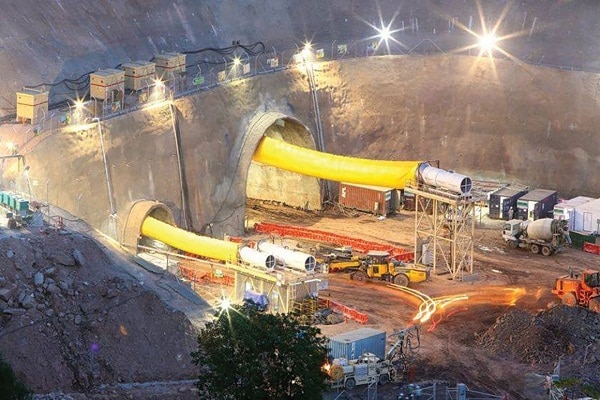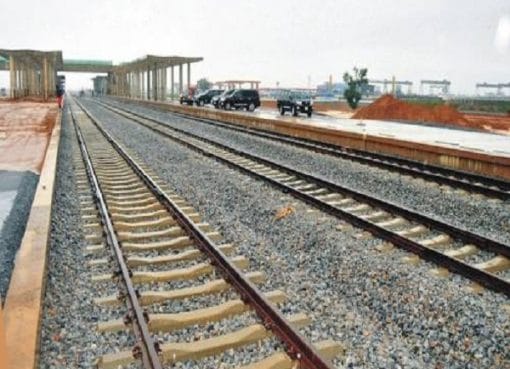The 9.00 km Chenani-Nashri tunnel, India’s longest and safest tunnel, built in a record period of five years, will reduce travel time between Jammu and Srinagar by at least two hours. It was inaugurated by PM Narendra Modi, and opened for traffic.
Built at a cost of Rs.3,720 crore on the BoT annuity model, the tunnel is a part of the Jammu-Srinagar Highway’s four-laning project. Constructed between Udhampur and Ramban at an elevation of 1,200 metres on one of the most difficult terrains of the Himalayas, this all-weather route is not only India’s longest road tunnel but is also Asia’s longest bi-directional highway tunnel. A unique feature is that it is a single-tube bi-directional tunnel, with a 9.35-metre carriageway, and a vertical clearance of 5 metres. There is also a parallel escape tunnel, with cross passages connecting to the main tunnel at intervals of 300 metres.
It is India’s longest road tunnel with a length of 9.28 km (5.8 mi) and the country’s first tunnel with a fully integrated tunnel control system.It reduces the distance between Jammu and Srinagar by 30 km and travel time by two hours. The all-weather tunnel bypasses snowfall and avalanche prone areas in winter at places like Patnitop, Kud, and Batote that obstruct NH 44 every winter and cause long queues of vehicles – sometimes for days on end.[4] It is named after Syama Prasad Mookerjee, who served as the Minister for Industry and Supply in Prime Minister Jawaharlal Nehru’s cabinet and later founded the Bharatiya Jana Sangh.
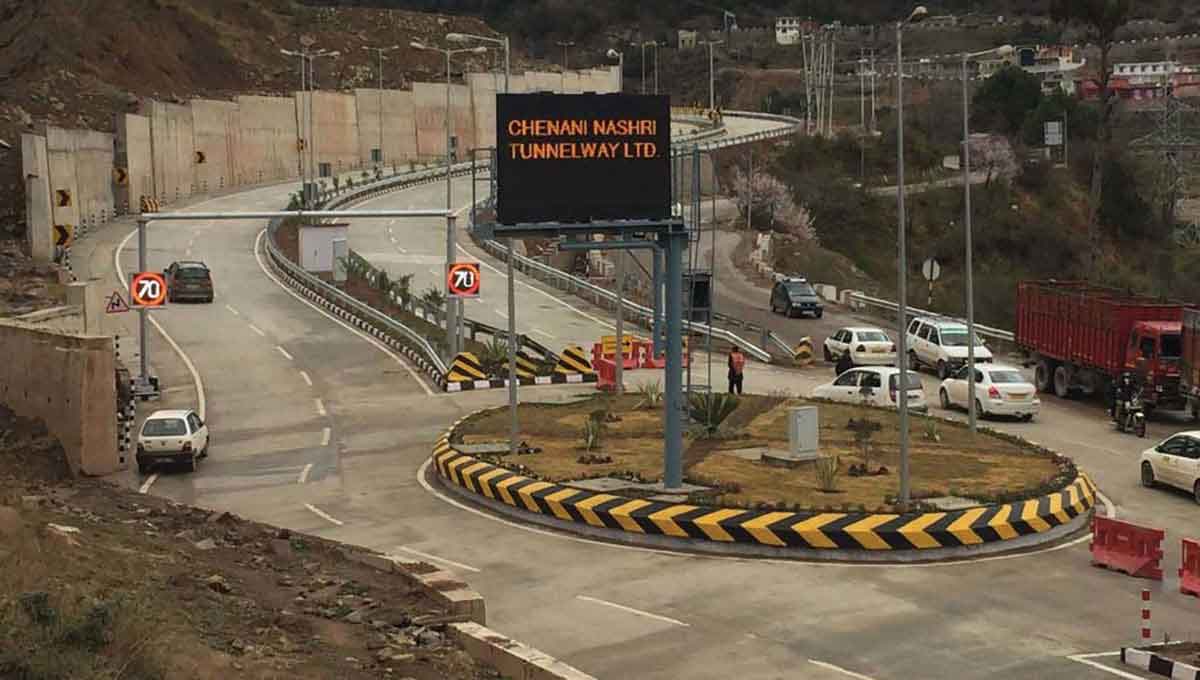
Unique features of the project
The 9.0 km tunnel, will bypass the snow and landslide prone Kud, Patnitop and Batote on the Jammu-Srinagar national highway. The tunnel’s environment-friendly design provides for a safe and all-weather route, with time saving of two hours for motorists travelling along the highway between Jammu and Srinagar, which is prone to frequent and long traffic jams due to landslides, snow and sharp curves, breakdown of vehicles and accidents, seen on mountainous routes. The reduced travel time will result in a saving of fuel worth Rs 27 lakh per day on traffic projections.
A unique feature of the tunnel is that it is completely dry, with not a single drop of water throughout the entire length of the tunnel. This has been done by using water proofing membranes behind the concrete walls. A system behind the membrane collects the water coming down from the mountains and takes it to a central drain. The collected water is then saved for captive use such as for firefighting and construction activities.
challenges during the development process
To overcome the varied challenges, including the ones mentioned above, we brought our various strengths to the fore such as our ability to mobilize working capital for the project in times of high cost of borrowings. This ensured smooth running of the construction and completion of the project. The contractor appointed had left the project midway, whereafter we negotiated, mobilized and managed the work with small sub-contractors. To carry out the work was a critical factor in maintaining the required pace of progress. IL&FS Transportation’s managerial strength in making financial, procurement, engineering, execution and trust of our lenders and investors helped us to make this happen.
Our project management strategy was “strategy without tactics is the slowest route to victory; tactics without strategy is the noise before defeat”, so we expect the best, plan for the worst, and prepare to be surprised. It was necessary to inculcate ownership in every worker engaged in the project.
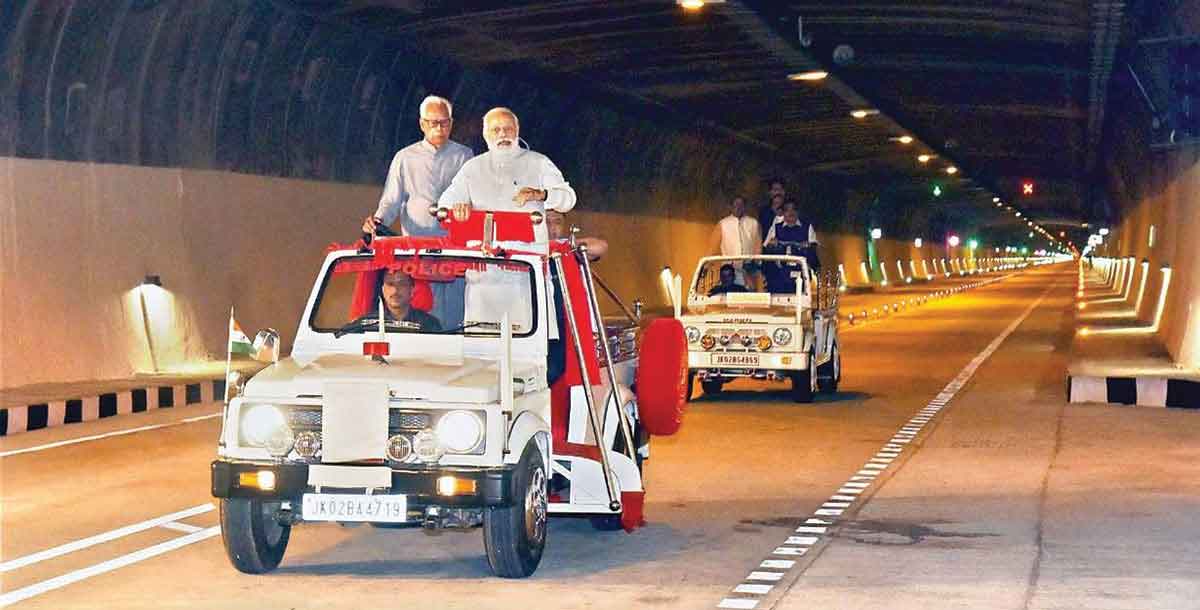 Prime Minister Narendra Modi dedicated India’s longest highways tunnel – the Chenani-Nashri tunnel in Jammu and Kashmir to the nation on 2nd April 2017. On this Occasion, the PM also announced to invest around Rs. 7,000 crore in highways projects in Jammu and Kashmir
Prime Minister Narendra Modi dedicated India’s longest highways tunnel – the Chenani-Nashri tunnel in Jammu and Kashmir to the nation on 2nd April 2017. On this Occasion, the PM also announced to invest around Rs. 7,000 crore in highways projects in Jammu and KashmirConstruction
The foundation was laid for the project in July 2011 by the then Jammu and Kashmir Chief Minister Omar Abdullah with Union Health Minister Ghulam Nabi Azad, under the ruling UPA government. The original estimate to build this two-lane tunnel was ₹2,520 crore (equivalent to ₹42 billion or US$590 million in 2019), but escalated to a total of ₹3,720 crore (US$520 million).The scheduled date of completion for the project was May 2016. Later, due to a dispute between the construction workers and the executing agency, the work was delayed and the next planned date was then further extended to July 2016.
On 12 October 2016, it was reported that almost all the work had been completed and the remaining work was planned to be finished in a few days and that “98 percent civil work including construction of 9 km tunnel and its approach road has been completed while the installation of equipment and gadgets like sound diffusers, ventilators, fans, firefighter equipment, electrical panels, transformers, lighting etc. inside the tunnel is under progress and likely to be completed in next 20-30 days.” They added that after the completion of remaining work, it has to pass the quality and commuters’ safety tests, and that the entire process would be completed by last week of November and authorities will inaugurate the “ambitious” project in the first week of December.
However on 3 February 2017, official sources said that the project was getting delayed due to bad weather conditions and snowfall on the highway, which snapped the electricity supply to the area and so the executing agency was unable to continue with the required testing and inspection processes.[9]
According to a news article on 1 March 2017, the Independent Engineers (IEs) reported that the demonetisation on 8 November 2016 resulted in work getting affected as the contractors failed to pay the labour involved in the work. The Construction Company’s Executive, Shafaq Syed also confirmed, “Demonetisation crippled our working. We were unable to make payments to our subcontractors..”
The tunnel was inaugurated by the Prime Minister Narendra Modi on 2 April 2017. The construction involved nearly 1,500 engineers, geologists and labourers, besides skilled workers. The National Highways Authority of India has spent ₹3,720 crore on the project
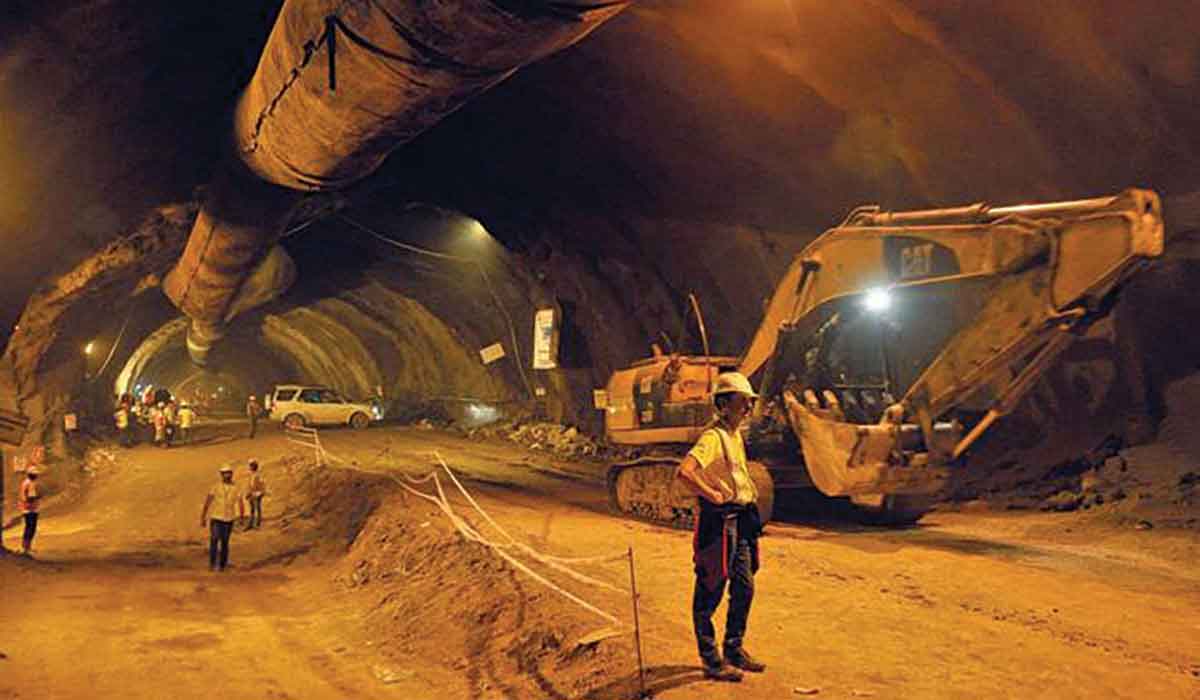
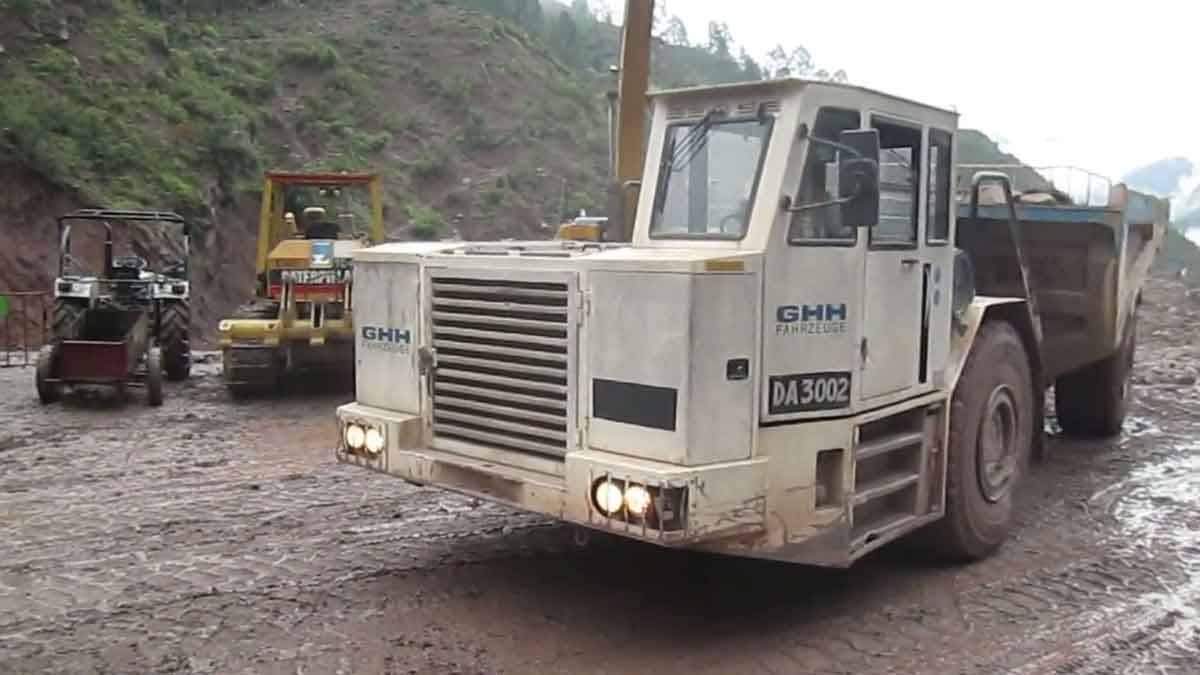 10 GHH low height Dump Truck (Model MKA35) played a key role in taking out the muck from the Tunnel
10 GHH low height Dump Truck (Model MKA35) played a key role in taking out the muck from the Tunnel
- India’s All-weather tunnel located at 1200 metres, thrice the height of Empire State Building.
- Built at a cost of Rs.3,720 crore, the tunnel will reduce the distance between Jammu and Srinagar from 41 km to 9.00 km
- Rs.27 Lakh fuel savings a day
- The Project was awarded to ITNL by the National Highways Authority of India (NHAI)
- 1,500 engineers, geologists, skilled workers and labourers worked on the project. The project has provided employment to about 2000 unskilled, semiskilled and skilled youth of J&K.
- 92.7 FM is mandatory for vehicles where emergency messages will be relayed
- 6,000 LED multiple colour lights used
- GSM phones will work inside the tunnel. 118 SOS boxes have been set up, one every 150 metres on both sides
- Smoke and heat dampers will react quickly in fire incidents
- 124 CCTVs, one every 75 metres
- 19 km long excavation was done for main tunnel, escape tunnel and cross passage. The excavation was possible by adopting the New Austrian Tunnelling Method (NATM).
- Comprises two tubes and 29 cross-passages, with special lane for exigencies
- Main tube has a diameter of 13 metres, while escape has a diameter of 6 metres
- Air quality monitors every 600 metres will keep a check on carbon monoxide + opacity
- Automated Integrated Traffic Control System will monitor traffic round-the-clock and overheated vehicle will be made to stop for cooling off outside the tunnel
- This is India’s first tunnel with transverse ventilation system
- Equipment & machinery: Boomers, Concrete Sprayers, High Capacity Articulated Dumpers, Hydraulic Gantries, Pumps, indigenously developed concrete batching plants, gantry forms, travellers, dumpers, transit mixers, concrete pumps etc..
- Construction materials used: approx 2 lacks MT of cement, 25000 MT of Steel, 5000 MT of Explosive for excavation works.
- Integrated Tunnel Control System to control/monitor traffic control system, communication system, power supply system, tunnel ventilation system, tunnel lighting system, Emergency call boxes, and fire fighting system.
Source: nbmcw


